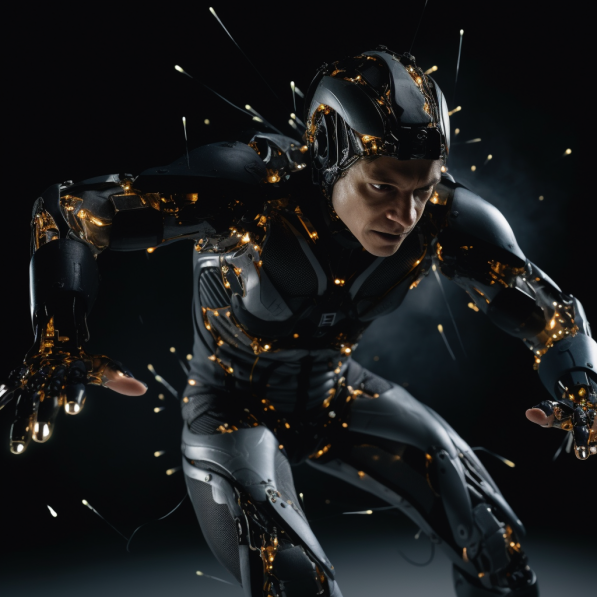
As a seasoned mocap expert, I have delved into the fascinating realm of motion capture technology and its pivotal role in the entertainment and gaming industry. Motion capture, or mocap, enables the translation of human movements onto animated characters, breathing life into virtual worlds and characters. In this article, we will explore the various methods used in motion capture, the intricacies of optical motion capture, the cleanup process involved, and how animations are enhanced to achieve realism.
Optical Motion Capture: More than Dots and Sensors
One of the most widely used methods in motion capture is optical tracking. Through a system of cameras, high-contrast markers, and sophisticated software, optical motion capture achieves unparalleled accuracy and precision in capturing human movements. With the advent of advanced equipment like Rokoko's Smartsuit Pro, the mocap experience has reached new heights.
The process starts with the actor wearing a suit embedded with markers. These markers reflect light and allow the cameras to track their positions in 3D space. Each marker represents a specific point on the actor's body, capturing even the subtlest motions. This data is then fed into specialized software that interprets the camera footage, extrapolating the movements into a digital representation.
Optical motion capture offers a range of benefits, including sub-millimeter accuracy and the ability to capture intricate details of human motion. However, it also comes with its challenges. The meticulous process of tracking and naming markers can be tedious, requiring patience and attention to detail. Additionally, there may be occasional limitations in accurately capturing bone lengths, necessitating additional adjustments during the post-capture cleanup.
The Cleanup Process: Polishing the Skeleton
Once the motion capture session is complete, the data enters the post-capture cleanup process. This involves refining and enhancing the captured movements to create a seamless and realistic animation. Animators meticulously track and label the markers to ensure their visibility and correct positioning throughout the animation.
One challenge that animators often face during the cleanup process is dealing with what is commonly known as "monkey butt." This refers to the need to adjust the hip and body positioning to eliminate any unnatural jitters or discrepancies in the animation. Another hurdle lies in matching motion capture data with actors of different body proportions, requiring careful scaling and adjustments.
Timing is also critical in motion capture. The performer's sense of timing during the mocap session greatly influences the final animation. Capturing the nuances and subtle variations in timing can bring a sense of realism and authenticity to the character's movements.
Enhancing Realism: From Motion Capture to Animation
While motion capture technology captures the essence of human motion, it is not a direct substitute for the art of animation. The initial motion capture data serves as the foundation, but animators transform the captured movements into expressive and seamless animations. This process requires attention to detail, skill, and artistry.
For instance, we can look at the iconic character Gollum from "Lord of the Rings," brought to life by the talented Andy Serkis. Despite the exceptional motion capture work, animators devoted incredible time and effort to refine and enhance the raw data, translating Serkis' performance into the distinctive personality of Gollum. Similarly, in the making of "Space Jam 2," the motion capture setup had to account for challenges posed by fog effects, requiring animators to meticulously blend captured movements with digital elements.
Conclusion: The Future of Realistic Animations
Motion capture continues to evolve, pushing the boundaries of realism in entertainment and gaming. The fusion of technologies, such as optical tracking, facial capture, and object tracking, further enhances the quality and fidelity of motion capture. As we move forward, we can expect even more seamless integration between motion capture and animation, resulting in captivating and immersive experiences for audiences.
In conclusion, we owe a debt of gratitude to the talent and artistry of motion capture performers and animators who bring our beloved characters to life. Through their dedication and expertise, the worlds we explore on screen gain a heightened sense of realism and evoke genuine emotional connections. The future of motion capture technology is bright, and it promises to revolutionize the entertainment and gaming industry, captivating us with even more astonishing and lifelike animations.n.
Leave a Reply